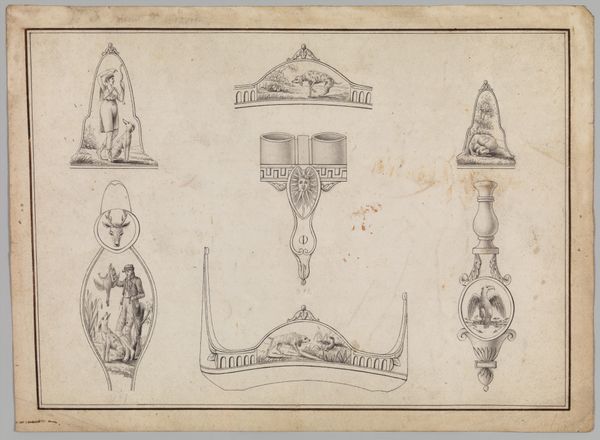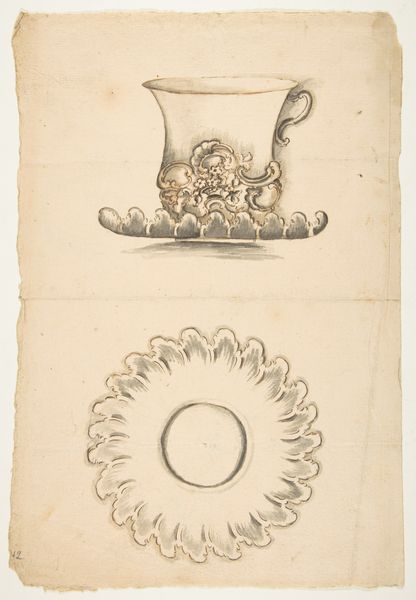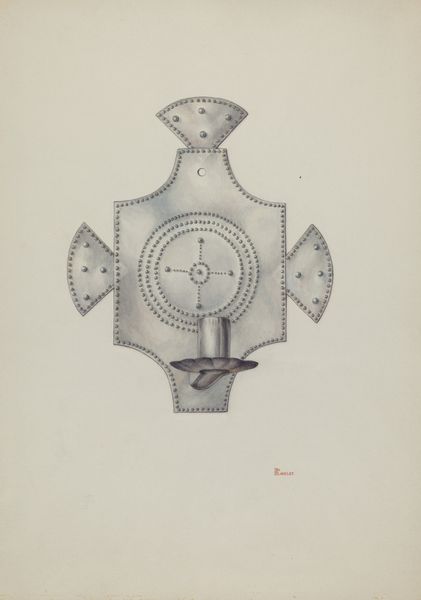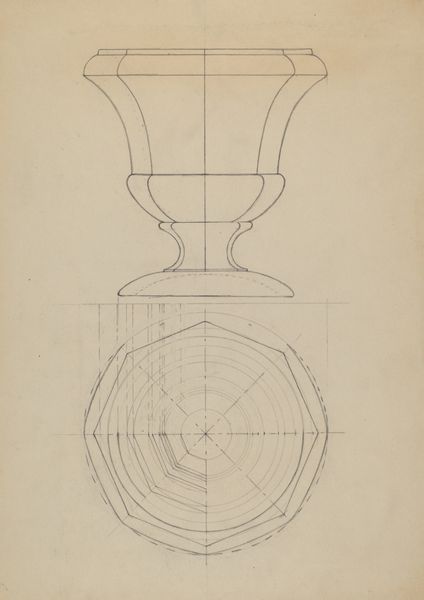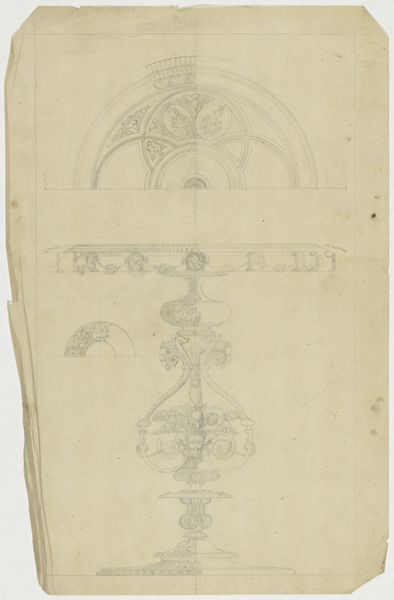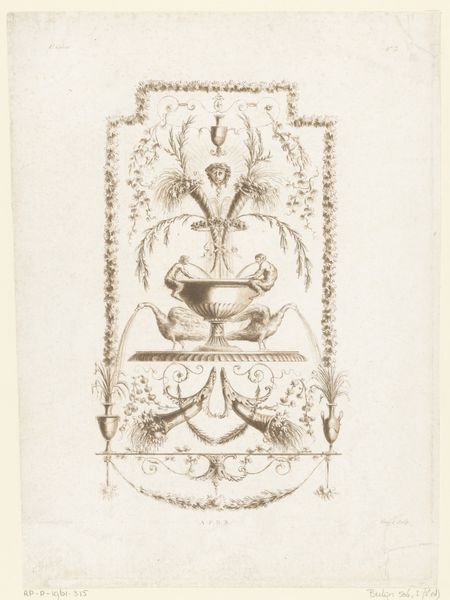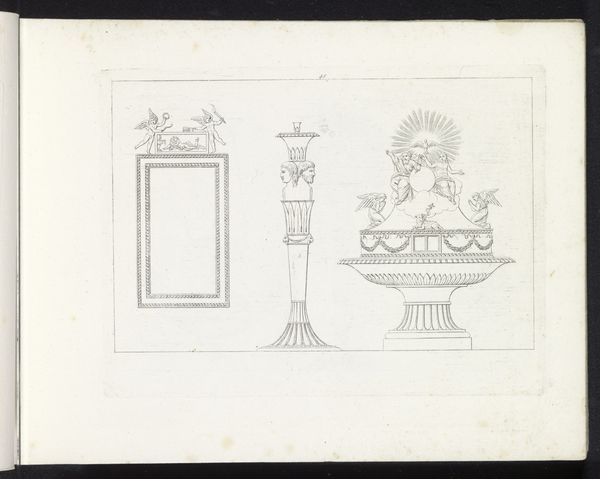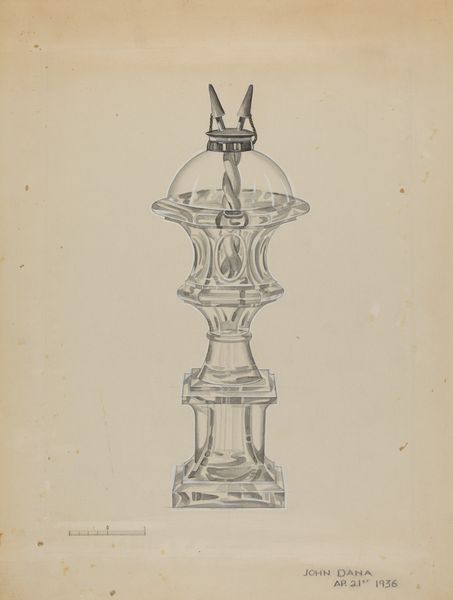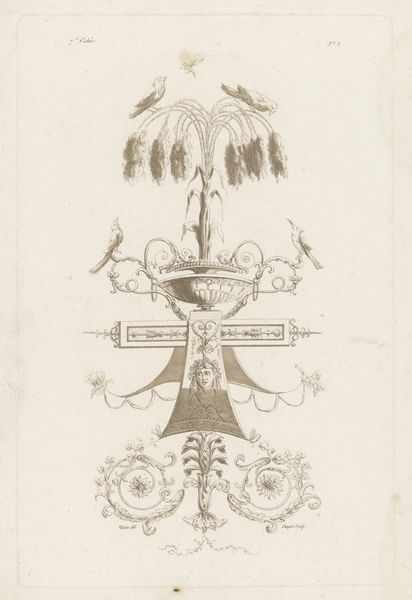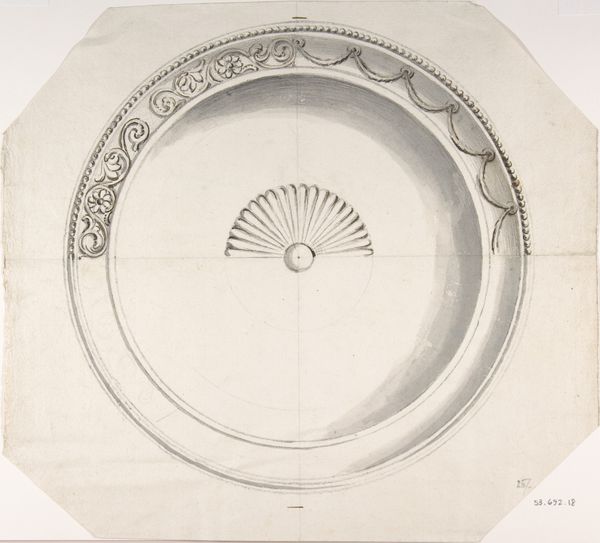
Ontwerp voor een kan en een schaal, de laatste geplaatst in de driehoekige bovenzijde van een houten standaard c. 1805 - 1815
0:00
0:00
drawing, pencil
#
drawing
#
neoclacissism
#
geometric
#
pencil
Dimensions: height 537 mm, width 799 mm
Copyright: Rijks Museum: Open Domain
Editor: So this is a drawing by Jean-Baptiste-Claude Odiot, around 1805-1815, entitled "Ontwerp voor een kan en een schaal, de laatste geplaatst in de driehoekige bovenzijde van een houten standaard"—a design for a jug and a bowl. The cool precision and the geometric forms give it such a strong sense of order. How do you interpret this work, beyond just a design? Curator: I see here the visual language of Neoclassicism weaponized. These aren't just aesthetically pleasing objects; they are loaded with cultural and political weight. The strict lines and idealized forms are a deliberate break from the preceding Rococo, signaling a return to supposed "purity" and "order" of ancient Greece and Rome. But who defines "order" and whose "purity" is being evoked? Editor: That's a very good point. I guess I was thinking about the artistry rather than the message. So you're suggesting Neoclassicism carries a specific agenda? Curator: Absolutely. Consider the social upheaval of the French Revolution occurring around the same time. Neoclassicism provided a visual vocabulary for a new regime seeking legitimacy by aligning itself with a glorified past. The jug and bowl, intended for an elite class, are silent yet powerful actors in the drama of social control. Do you see anything else in the design itself that might suggest this? Editor: Well, the figure on the jug looks like a classical sculpture. Maybe that links it back to your point about evoking the past for authority? Curator: Precisely. By studying such pieces, we start to grasp how aesthetic choices can subtly reinforce specific power structures. It is interesting how objects seemingly devoid of radical thought are used for it. Editor: I never considered art this way, but that makes so much sense now! It adds a completely new dimension to appreciating it. Curator: Indeed. This exploration encourages critical engagement and uncovers the layers of meaning embedded within seemingly simple design.
Comments
No comments
Be the first to comment and join the conversation on the ultimate creative platform.
